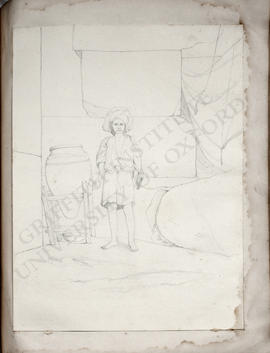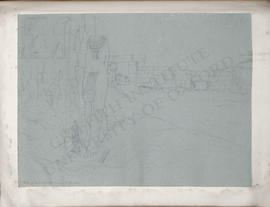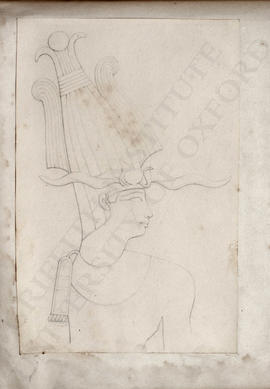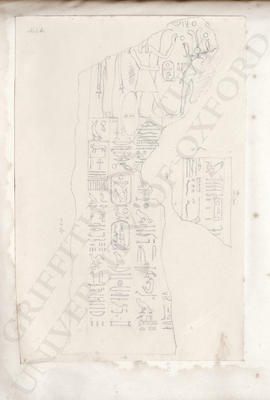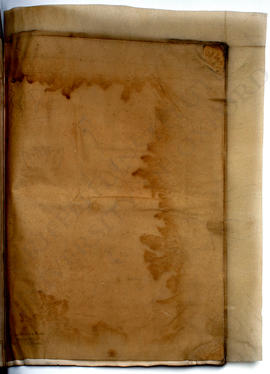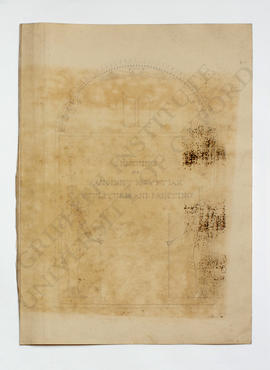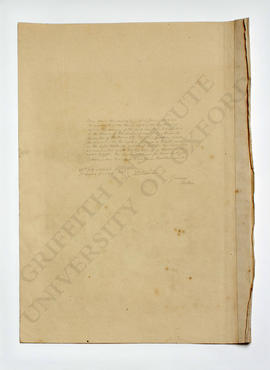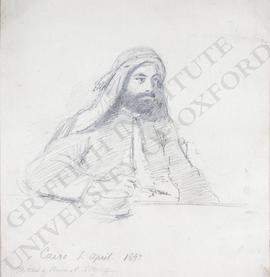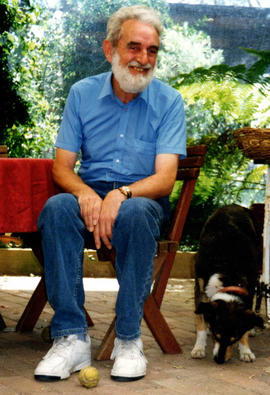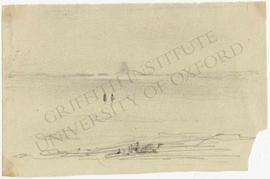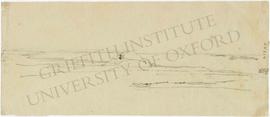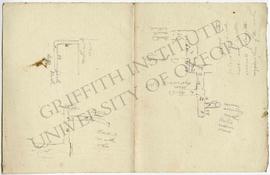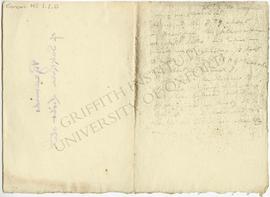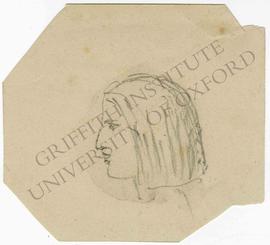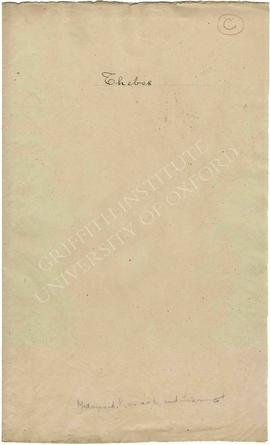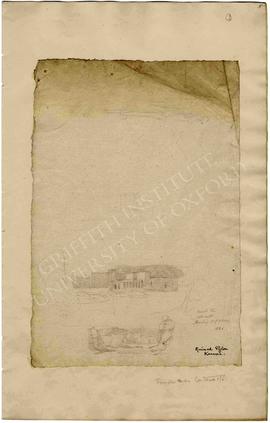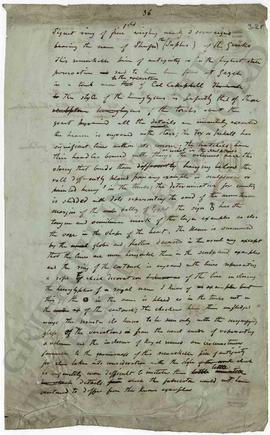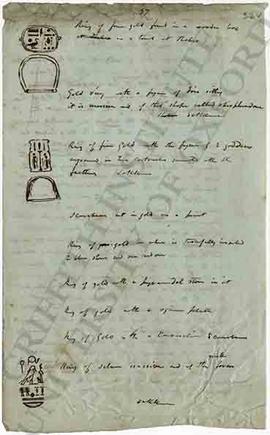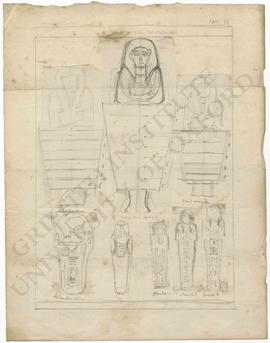'Signet ring of fine gold weighing nearly 3 sovereigns
bearing the name of Shufu the (Suphis) of the Greeks
This remarkable piece of antiquity is in the highest state
preservation and said to have been found at Gezeh
in a tomb near that to the excavation of Col Campbell The work
in The style of the hieroglyphics is perfectly that of those
sculptors hieroglyphics of the tombs about the
great pyramid all the details are eminently executed
The heaven is engraved with minute stars; The Fox or Jackall has
significant lines within its con[t]our; The hatchets have
their handles bound with thongs as usual in the sculptures; The volumes have the
string that binds them differently hanging below the
roll differently placed from any example in sculptured or
painted hierogs in the tombs; The determinative for country
is studded with dots representing the sand of the mountainous
margins of the side valley of Egypt The sign [F35] has the
tongue and semilunar mark of the longer examples as also
the vase in the shape of the heart. The Name is surmounted
by the usual globe and feathers decorated in the usual way except
that the lines are more horizontal than in the sculptured examples,
and the ring of The cartouch is engraved with lines representing
a rope of of which decoration I know no of the line inclosing
the hieroglyphics of a royal name I know of no example but
this; the [Aa1] in the name is placed as in the tombs not in
the centre as of the cartouch; the chickens have their unfledged
wings The serastes its horns to be seen only with the magnifying
glass Of the variations in from the usual made of representing
a volume and the inclosure of Royal names are circumstances
favorable to the genuineness of this remarkable piece of antiquity
for when taken into consideration with the style of the work which
is infinitely more difficult to imitate than little little x(?)
in which details from in which the fabricator would not have
ventured to differ from the known examples'
